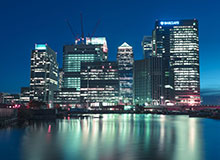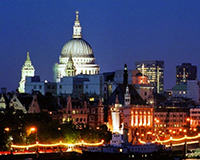Spending time in New York recently made me realise how dramatically London has improved over the past 25 years.
One colleague told me how he had built his teenage children up for an August trip to the Big Apple, having been wowed by its innovation, colour and energy when he himself first visited in the late 1980s.
His kids loved New York, but couldn’t see how it was any better than London, showing how the gap in perception has narrowed. Many now see our capital as the ultimate world city.
In truth, you have to step away from London and speak to people from abroad to see how special it is. Our modern, clean cityscape, world-class buildings and vibrant mix of restaurants and cafés all create a sense of place that draws millions from across the globe.
The boom of ‘89
It was all different 25 years ago, when a development boom was peaking and I was an investment agent at Drivers Jonas. We had seen five years of strong economic growth fuelled by Thatcher-driven deregulation and a housing boom, but when the economy collapsed the international investment tap quickly turned off.
Japanese investors had been the keenest buyers of prime property, but were so badly burned that they have not returned to this day. Swedish and American investors also suffered, and it was only when the Germans arrived in the
mid-1990s that London regained lost ground.
This was the era of the poll tax riots, interest rates approaching 15% and offices and even shopping centres being completed largely unlet. Frankfurt made a play to steal the title of Europe’s financial centre, and London had still to mount a serious challenge to the investment banking bonanza about to be enjoyed in New York.
But 25 years later, London has arrived on the world stage. According to Knight Frank’s Prime Global City Markets, published last month, it is the city that matters most to the world’s wealthy right now.
London is expected to see £296bn in GDP growth in the period to 2030, and to become home to 4m high-income households during the same time. If you had invested £620,000 in prime London residential in 2010 it would now be worth £960,000, outstripping the growth rates of New York, Hong Kong, Paris, Shanghai and Singapore.
The agent also cites “a new optimism surrounding the office sector” in its latest Market Outlook, pointing to “a market where the upswing is accelerating”.
There are some issues. For example, it is vital in the world’s eyes that we sort out London’s airport debate – we are all awaiting the Davies Report next year for a verdict on a sector that contributes almost £50bn to UK GDP and supports 921,000 British jobs.
But overall my verdict on London upon returning from the US is exceptionally good.
While America is showing good growth, it admires how London is attracting international occupiers – AON is moving its global headquarters from Chicago to British Land’s and Oxford Properties’ Leadenhall Building – and has a plan for its infrastructure. The potential of Crossrail is causing excitement.
What I do envy is the swagger of the Americans. We worry about the peaks and troughs of our stock market, but why don’t we in London stand back and admire what we done?
Inflation in Britain is low, wage growth is restrained, house prices are rebalancing and there is now less chance of interest rates rising than there was six months ago.
Vibrancy and colour
Add in the vibrancy, culture and colour of London and it is not surprising that, in the midst of a global war for talent, the likes of Google and Facebook are investing heavily in the UK.
If I had to choose between London and New York to outperform over KF’s timescale to 2030, it would be our capital every time.
Tim Roberts is head of offices at British Land












